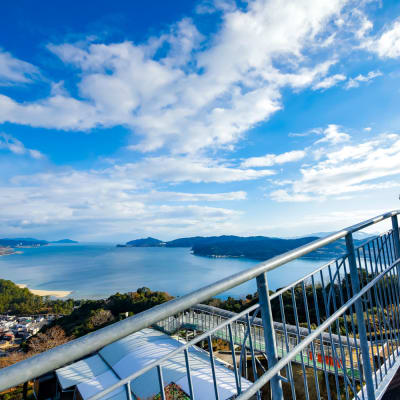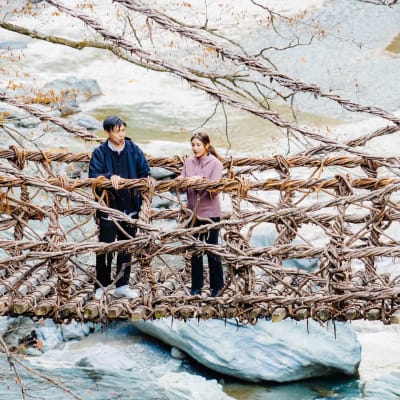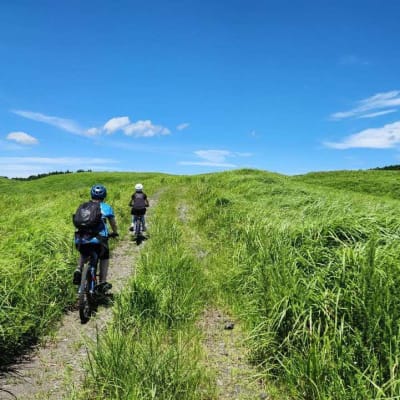
Sustainable Destinations Springs of Sustainability: Conservation Efforts in Japan’s Celebrated Onsen Regions
Japan’s diverse hot spring areas, each with its unique history and culture, have seamlessly preserved their rich hot spring legacy into the modern era. Examining representative hot spring locales like Toyooka City, Hakone Town, Nasushiobara City, and Gero Onsen, we delve into their active pursuit of sustainability. These regions conscientiously incorporate nature, ecosystems, and local culture into their practices, offering valuable insights into fostering a sustainable future.
Toyooka (Hyogo)


Situated in the northern part of Hyogo Prefecture, Toyooka City is an integral component of the San’in Kaigan Geopark, capitalizing on the region’s abundant natural resources. The city presents a diverse array of attractions encompassing traditional culture, culinary experiences, and thriving industries. Let’s explore its charms, focusing on the centuries-old Kinosaki Onsen, sustainable agriculture, and ecotourism programs aimed at stork conservation.

Kinosaki Onsen, steeped in a history that spans 1300 years, stands as one of Japan’s most historic hot springs. Nestled along the picturesque Otani River adorned with graceful willow trees, this spa town preserves the ambiance of a bygone era. Wandering through its streets, you’ll encounter a nostalgic sensation, as if transported back in time.

At Kinosaki Onsen, efforts are focused on making the hot spring culture sustainable. This includes conserving hot spring resources, enforcing bathing rules, preserving the yukata culture, and managing an art center that honors the town’s history as a literary center.

Despite being designated as a Special Natural Treasure, storks were once declared extinct in 1971. However, Toyooka has successfully bred and reintroduced them into the wild. This accomplishment establishes the town as an exceptional global destination, distinguished by its ability to coexist uniquely with storks.

At Toyooka, tourists can engage in sustainable tourism programs, such as participating in stork habitat conservation activities, and gain an in-depth understanding of the efforts to protect and coexist with these precious creatures.

In addition, Toyooka maintains a wealth of traditional practices. Activities such as temple visits, Zen meditation, traditional craft experiences, and soba noodle making allow visitors to connect with these charms.

An integral local industry and specialty of Toyooka is bag making. Since the late 19th century, Toyooka has incorporated Western culture by producing leather bags, becoming Japan’s top bag-making city.

Even within the bag industry, captivating initiatives are actively being pursued to establish a sustainable production and consumption society. Notably, the reuse of discarded materials like fishing nets and plant press residues is a leading approach aimed at reducing environmental impact.
With its wealth of natural resources, ecosystems, and commitment to sustainable craftsmanship, Toyooka offers a plethora of attractions and discoveries. Why not plan a visit to experience firsthand the harmonious blend of traditional culture and innovative environmental conservation activities?
Links
Hakone (Kanagawa)


Situated in the southwestern part of Kanagawa Prefecture, Hakone is a renowned tourist destination centered around Mt. Hakone, a volcano that commenced its activity approximately 500,000 years ago. It features a diverse range of tourist attractions, including hot springs, a summer retreat, opportunities for nature exploration, mountain and lake recreation, historical sites, and art facilities. This collective offering positions Hakone as one of the most popular resorts near Tokyo.

In Hakone, the local administration, residents, and businesses are working together with visitors to promote Hakone Sustainable Tourism. Their efforts aim to create a sustainable tourist destination, and efforts are underway across multiple fronts to achieve this goal.

This initiative encompasses a range of endeavors, including the preservation and passing down of Hakone’s distinct tourist resources—its unique volcanic geography, natural hot springs, a diverse ecosystem with endemic flora, fauna, and insects, as well as its cultural and historical facets and breathtaking views of Mt. Fuji. Examples of these efforts include activities and programs like the certified guide training system.
Furthermore, we are actively working towards promoting universal accessibility within tourism, which involves creating guidebooks tailored for wheelchair users and organizing seminars to enhance accessibility.

Hakone is also known as one of the top hot spring destinations in the Kanto region. It has various attractive hot springs and spa towns, such as Hakone Yumoto Onsen, known for the largest number of springs, and Gora Onsen, characterized by its milky-white hot springs from Owakudani.

In addition, Hakone offers a wide range of outdoor activities in its magnificent natural setting, including mountain biking, hiking, kayaking, and forest adventures. Let’s immerse ourselves in the rich nature that the local government and residents have preserved and nurtured over the years.
Links
Nasushiobara (Tochigi)


Shiobara Onsen, located in Nasushiobara City, is a collective name for 11 hot spring areas scattered along the Hoki River, which flows from the Nasu Plain in the northern part of Tochigi Prefecture to the northwestern mountains. Its popularity is attributed to its convenient accessibility from the city center, varied spring qualities offering health benefits, and the abundant natural scenery that surrounds it.
Shiobara Onsen boasts a history that spans over 1,200 years, gaining national recognition, particularly in modern times, for being a favored retreat among numerous writers and celebrities.

Efforts are underway to preserve the cultural heritage of Shiobara Onsen and pass it on to future generations. Leading these activities is Shiobara Monogatari-kan, a facility that showcases the history, nature, and culture of the area through literary figures and works associated with it.
Additional initiatives include the Shiobara Literary Study Group, offering literary walks and lectures, and the Shiobara Hot Spring Town Guide Association, collaborating with local clubs and volunteer groups to promote the area’s unique charms.

In Nasushiobara, where over 80% of the area is forested, the community actively implements various environmental protection measures. These include the use of 100% recycled paper bags and the enforcement of ordinances, such as parking bans and fire use restrictions, through collaborative efforts between the administration and local residents.

To experience the beautiful nature preserved and nurtured by these efforts, a variety of outdoor activities are available. In particular, self-guided bike tours using rental e-bikes and navigation devices are ideal for enjoying sustainable travel.

Other attractive programs include stand-up paddleboarding (SUP) with scenic views from the beautiful lakes, and canyoning to explore the varied terrain and river flows. Why not immerse yourself in the great outdoors of Nasushiobara and fully experience its natural beauty?
Links
The tourism bureau of Nasushiobara city
Gero Onsen (Gifu)


Gero Onsen, located in the center of Gifu Prefecture, is a hot spring resort with over 1000 years of history and national fame. The beautiful spa town is built along both banks of the Hida River, which flows through the center of the town, and is lined with ryokans (Japanese inns) and hotels. With facilities for day-use bathing, foot baths, local gourmet dishes and sweets, Gero Onsen is popular for its relaxed hot spring hopping and culinary delights.

Gero City has been a trailblazer in seamlessly blending ecotourism with marketing and management through its E-DMO (Ecotourism & Destination Management Organization) approach to promoting sustainability. It has introduced systems, including a centralized management system, aimed at ensuring a stable supply of high-quality hot springs for future generations and steering the region toward a positive cycle.

The hot springs, with a pH of 9.2, are alkaline simple springs known for their soft feel and abundant health and beauty benefits. Why not stroll through the nostalgic spa town, experience its long history and enjoy the various baths?

In addition, the area around Gero Onsen offers a variety of activities in its rich natural environment. The Hida-Osaka Falls Tour allows visitors to explore an area dotted with over 200 waterfalls, each over 5 meters high. This walk amidst the touching waters brings encounters with numerous scenic natural vistas celebrated as the treasures of Gifu.

Additionally, Gero Onsen is graced with numerous historical sites, including temples and landmarks, notably the Onsenji Temple. This temple, intricately linked to the legend of the origin of Gero Onsen and dedicated to Yakushi Nyorai (Buddha of Healing), provides visitors with the opportunity to experience traditional Zen meditation—an activity that rejuvenates both the mind and body. Nestled atop 173 stone steps, the temple grounds offer a panoramic view of the South Hida Mountains and the enchanting hot spring town of Gero. In the autumn, approximately 80 maple trees paint the area with vibrant hues, establishing it as a popular spot for leaf peeping.
Gero Onsen invites you to indulge in its diverse charm year-round. Experience moments of serenity enveloped in the breathtaking beauty of nature.
Links































































